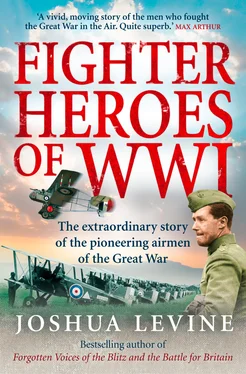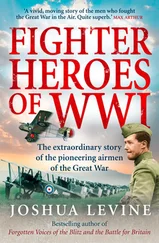In 1908, the first flying machine took to the air in Britain. It was flown by an American, Samuel Cody. Cody, cowboy, actor, kite inventor, balloonist, aviator and eccentric, had arrived in Britain in 1901, bringing his Wild West stage show with him. Dolly Shepherd, a pre-war balloonist and parachutist, remembers being drafted in to act as his assistant:
Cody was a sharpshooter with long hair, pointed beard, great big hat and white trousers. He was quite a showman. When I met him, he was frustrated because he used to shoot an egg off his wife’s head and the night before, he had grazed her skull. ‘Don’t despair!’ I said, ‘I’ll take her place!’ I’d never even seen the show, but that night, I went up on stage, and he put an egg on my head and took aim. What I hadn’t reckoned for – his son came up and blindfolded him. I didn’t dare move but he shot the egg and all was well. The next day, Cody invited me to see his kites. He had to do the sharpshooting business and theatrical things to make money. But he was making his big kites in the great hall at Alexandra Palace.
These were man-lifting Boxkites, which Cody intended to sell to the military authorities for use as observation posts. Over the years, Cody progressed from kites to airships to aircraft, and in October 1908, his flying machine, powered by an Antoinette engine, flew for a distance of 1390 feet. One of his first flights is remembered by Edward Bolt, an NCO with the Royal Engineers Balloon Section at Farnborough:
He was doing practice flights for a long time before he got off the ground. I remember one of his flights when I was one of the markers. He circled for a mile and there were twelve of us stood there with flags until he’d completed his circuit and landed. We all came towards the machine and Cody said to our corporal, ‘Here’s a pound! Take these men to the Queen’s Hotel and buy them a drink! That’s the only pound I’ve got left …’
In May 1909, John Moore-Brabazon (who later proved an old adage by flying a pig in his passenger seat) became the first British man to fly an aircraft in Britain. Five months later, he collected a prize of £1000 offered by the Daily Mail to the first person to fly a circular mile in a British aircraft. Recalling this event, Moore-Brabazon describes it as ‘the real start of the British aeroplane industry’. Despite his achievements, there were many in Britain, including Lord Northcliffe, owner of the Daily Mail , who were worried that the country was falling dangerously behind its rivals. The newspaper attempted to rouse public concerns, by announcing that Britain was ‘no longer an island’, and it offered a new prize to the first pilot to fly across the English Channel. On 25 July 1909, the prize was won – but not by a Briton. Louis Blériot, a Frenchman, flying his own monoplane, flew from Calais to Dover in thirty-seven minutes. Northcliffe’s fears concerning British vulnerability appeared justified. ‘The British people have hitherto dwelt secure in their islands … but locomotion is now being transferred to an element where sea power is no shield against attack,’ warned the Daily Mail. Describing Blériot’s achievement with barely a hint of sour grapes, Moore-Brabazon comments:
He rather gallantly and very luckily crossed the Channel in a monoplane tractor with a three cylinder air-cooled engine that never before or after – even when copied – ever ran so long. His success was due to running into a very big shower of rain that cooled his engine when in sight of our shores.
Lucky or not, Blériot’s achievement hastened British aircraft development. Across the country, engineers and mechanics began to adapt their skills to the design and construction of flying machines. Frederick Handley-Page was eventually to become a celebrated aeronautical designer, responsible for the first heavy British bombers which flew towards the end of the Great War, as well as the Second World War Halifax bomber. At first, however, he was working out of a shed in Barking, with a coppersmith, Charles Tye, as his sole assistant. Tye recalls meeting Handley-Page in a pub:
One Friday night, the barmaid said to me, ‘Charlie, the gentleman sitting down there with a beer is looking for a coppersmith who can use a blowlamp.’ So I looked round and saw Handley-Page. I went across to him and he told me he was opening up a workshop and was building a ‘machine’. I didn’t know he meant an aircraft. But I went down to his workshop, where he only had a little coke brazier. There were two benches with wing spars that would take the wings of the monoplane that he was building, but apart from that, the shop was bare. He had no tools whatever – only a plane and some chisels. So we started to build the machine together. I was making all the fittings. I was brazing pieces of tube onto plates that would take the struts. As we went on, we took on a carpenter called Cyril who made the ribs and the longerons. By the time the aircraft was finished, there were a dozen of us working on it. We called it Yellow Peril because the wings were covered in fabric and doped in a yellow cellulose material.
Other great aeronautical companies were also setting up. The Avro company was formed by A. V. Roe, a marine engineer from Manchester, who had made detailed observations of birds while at sea. In June 1908, four months before Cody’s maiden flight, Roe almost took to the air in a machine of his own design, but he never quite made it off the ground. Geoffrey de Havilland – who would one day design the Mosquito, the Second World War fighter-bomber, and the Comet, the world’s first jet airliner – began work on his first aircraft in the same year, in a shed off the Fulham Road in London. He flew the machine, eighteen months later, from a hilltop on the Hampshire Downs. It took off, flew for thirty-five yards, and crashed. De Havilland suffered only cuts and bruises, but the machine was wrecked.
A crucial boost to designers arrived in 1909 with the introduction of the French Gnôme rotary engine. Rotary engines had a better power-to-weight ratio than conventional engines, they reduced vibration and they were far more efficiently cooled, due to the rotation of the cylinder block around the crankshaft. Copies of the Gnôme engine were soon produced, and powered flight became a far more practical proposition.
It was not long before flying gripped the British public’s imagination. In 1910, Claude Grahame-White, a motorcar dealer, established an aerodrome at Hendon in north London – nowadays the site of the Royal Air Force Museum. ‘London Aerodrome’, as Grahame-White called it, quickly became a venue for aerial displays and joyrides for day-trippers. Eric Furlong was a young man, living in Hendon, whose interest in flying was sparked by visits to the aerodrome. He remembers:
Clarence Winchester was a freelance pilot with his own aeroplane giving joyrides to people for something like £1 a time. He used to put the passenger in the aeroplane and then start frightening them by telling them that they mustn’t touch this , that whatever they do, they were not to lean against that , that wire was absolute death if they got tangled up in it. By the time they took off, the passenger was jelly. When we asked him why he did this, he said, ‘Well, they think they’re getting their money’s worth if they’re really frightened …’
On Sundays, Frederick Handley-Page would send his aircraft, Yellow Peril , down to London Aerodrome, where its pilot would give joyrides. There was one man who refused to take a ‘flip’, however, as Charles Tye recalls:
Every Sunday, we used to take people up for trips. From Hendon, round Hyde Park and back. I don’t suppose the trip lasted more than ten minutes and we used to charge a guinea. One particular Sunday, Handley-Page was there himself and I saw him talking to the actress Gladys Cooper. We hadn’t had a customer for a while, and the pilot, a man named Whitehead, said to me, ‘I wonder if Miss Gladys Cooper wants a trip? Go and ask! And if she doesn’t want a flip, ask Mr. Page if he’d like one. I don’t think he’s ever been in the air before!’ So I went over and just stood aside Mr. Page while he was talking to Gladys Cooper. ‘What do you want, Charlie?’ he asked. I said, ‘Mr. Whitehead is sitting up there and he’s getting fed up. Is anybody coming up?’ He said, ‘No!’ So I said, ‘Well, he says he’d like to take you up as he doesn’t think you’ve been in the air before!’ He looked at Miss Gladys Cooper and he took me aside and whispered in my ear, ‘You go back and tell Whitehead – I build them. I don’t bloody well fly them!’
Читать дальше












